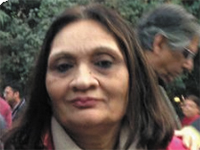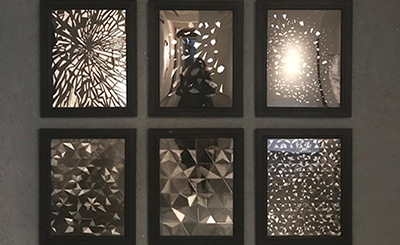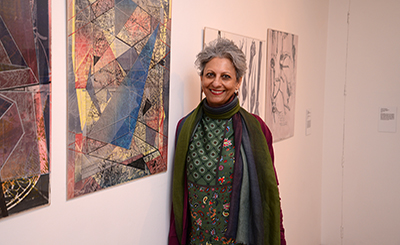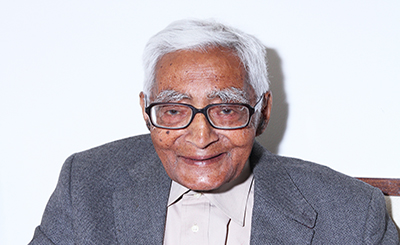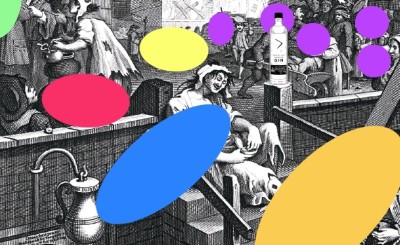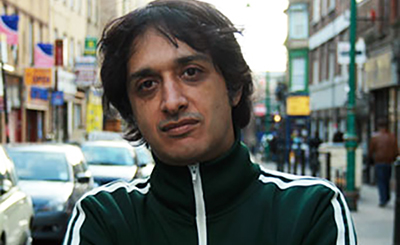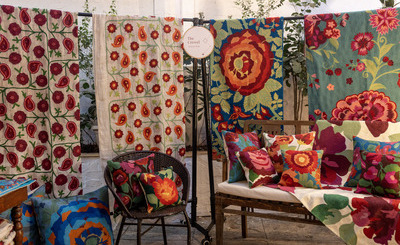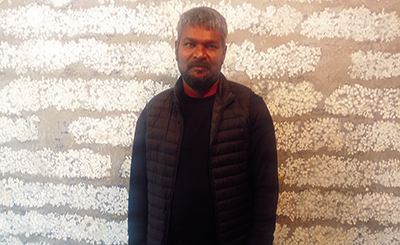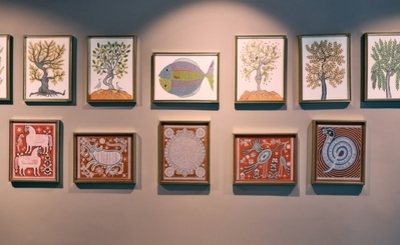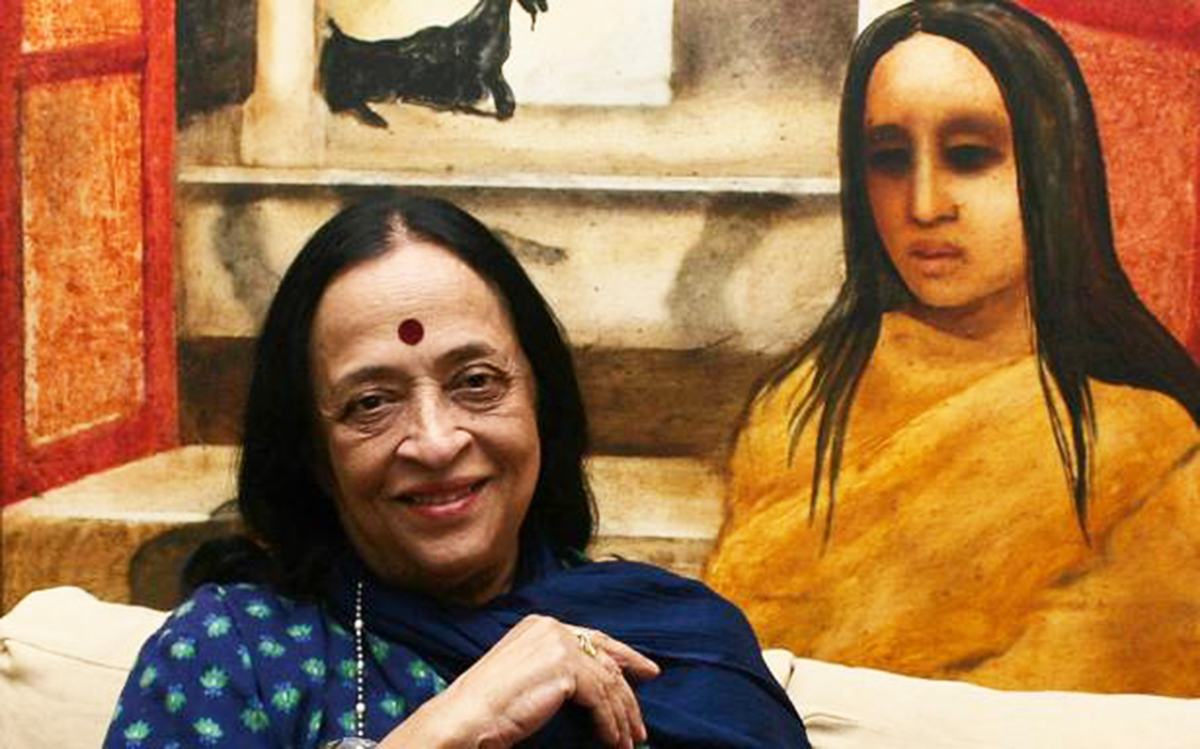
Anjolie Ela Menon. Courtesy of Aicon Gallery.
Known for her extraordinary portrayals of the ordinary folks, Anjolie Ela Menon is dismayed to see the migrant crisis unfold. Confined to her Delhi home, she has found it hard to keep art on hold. She has rigged up a makeshift studio in her house to produce a series of small works, like Festival and Landscape
Art reflects life as art works document the struggles and aspirations of each decade. In the wake of Covid-19, followed by the lockdown,the future will see a new visual language that will mirror the sad state of affairs of our times. The contagion has created a new normal — of people practising social distancing and stepping out only in masks, of roads, otherwise chock-a-block, being empty. These images will remain with us for a long time.
The labourers, migrants and daily-wageworkers have been worst hit because of the lockdown as their livelihood has been snatched away from them. Because of the lack of transport, their journey back to their villages has been treacherous and painful. The exodus of the labourers walking for miles with all their belongings evokes memories of Krishen Khanna’s Partition series, where the people gave up their homes and country to inhabit another, proving how history is repeating itself.
Anjolie Ela Menon is known for her extraordinary portrayals of the ordinary folks. Menon, 79, studied at the JJ School of Art in Mumbai, earned a degree in English Literature from Delhi University and studied fresco in Paris at the École des Beaux-Arts on a French Government scholarship. Her stay in Paris greatly impacted her art and she was influenced by Vincent van Gogh, Paul Cezanne, and Amedeo Modigliani. The Christian Romanesque, European church imagery and the brilliance of a Byzantine palette caught her imagination, only to emerge in several of her works from priests, prophets, Madonnas to nudes.
Menon’s paints subjects and events that she feels deeply about. In the past, her rendering of the Godhra riots were stark, emanating a feeling of loss and despair. Menon brings to life the atmosphere of the Nizamuddin Basti where her studio is located. The people of the area are her inspiration and, on several occasions, the artist has portrayed their lives. Her painting, Nizamuddin Basti, oil on Masonite (2014), is a tribute to them. The mothers, with her son with the goats, are contained in their own world. The artist brilliantly depicts the comfort of love in this humble place where relationships are deep and pure.
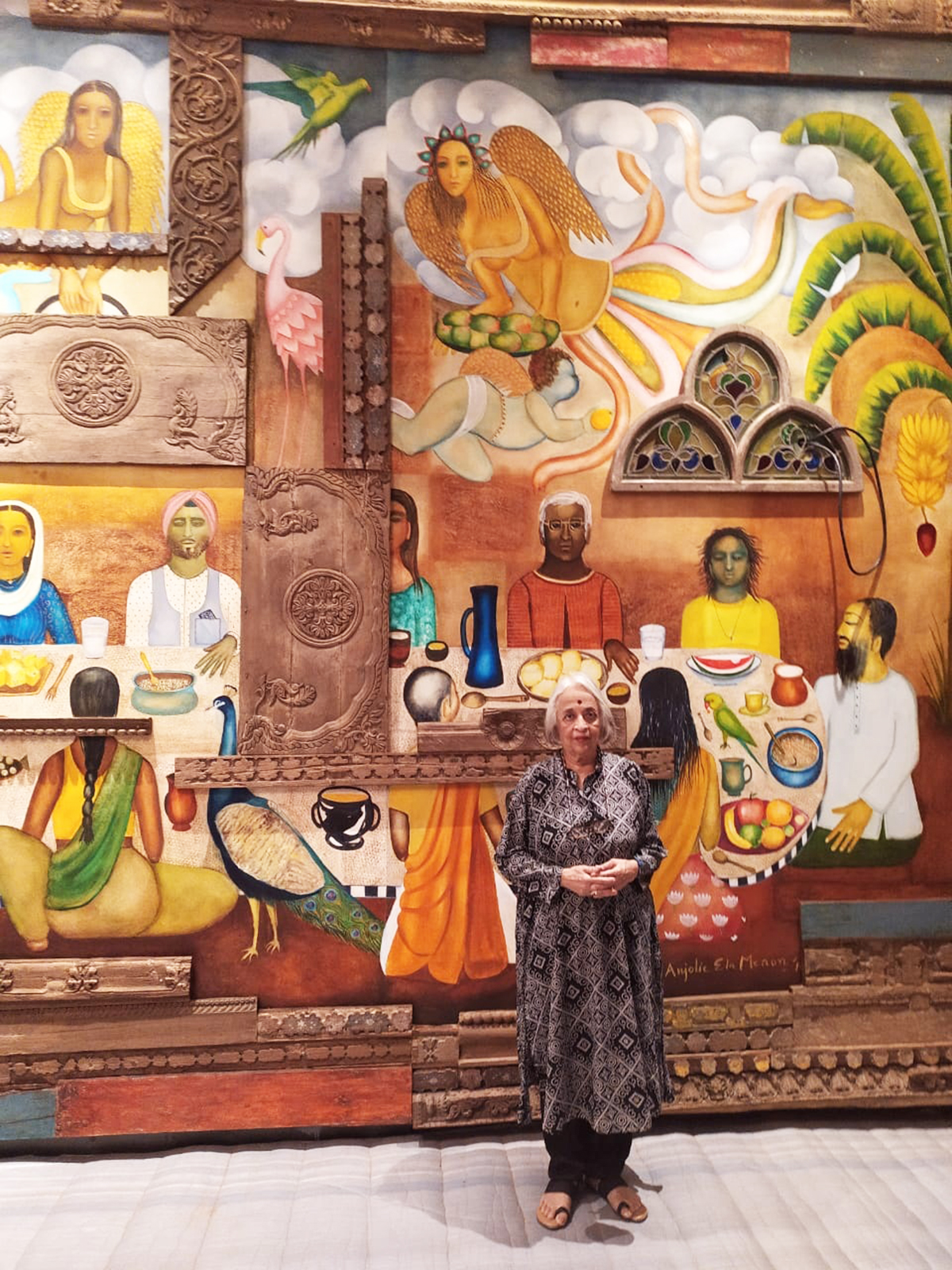
Anjolie Ela Menon at her Delhi residence. In the backdrop is her mural, Celestial Being
Because of lockdown and her inability to paint in her studio, the artist is painting on small canvases, unlike her latest large mural, Celestial Being (14x26’), where the common folks were her protagonists, again. She has created an image that evokes memories of the last supper with men and women seated on a long table, representing different parts of India, as is evident by their attires. The most significant feature is the Hindu priest and a Muslim maulvi, who she deftly places at the two heads of the table, making a delicate statement in today’s world.
Artist will continue to give their interpretation of the world that surrounds them.The uncertainty and total confusion that Covid-19 has caused is bound to find its way into their artworks. Like in the past, for artists like Anjolie Ela Menon, Krishen Khanna, Jatin Das and Jitish Kallat, the meticulous recording of events will continue to be their focus. They will come up with hard-hitting depictions of the cultural, social and political imperatives of these times, imbued in their personal experiences. The narrative of the common man will continue, displaying a deep compassion for them. The suffering these people have endured is going to reflect in the art work that will be produced in the post-Covid world.
Excerpts from an interview with Menon:
Your paintings often feature the ordinary people. What do you think of the plight of the daily-wage workers, migrants during the current crisis?
There doesn’t seem to be any connection yet with the current situation in the subject matter of my current output. I continue to be extremely worried about the tragic fate of the migrants and was recently shocked to hear of a new wave of people trying to walk just when trains were being provided. How will the labourer return when industry opens up? How terrible is their plight, walking with their children and their meagre belongings through the darkness of the night, hungry penniless and afraid!
How has the lockdown affected you?
We have got used to a very slow daily routine, thanking God for the blessings we enjoy, compared to millions who are suffering out there. I rigged up a makeshift studio in the house, using a dining room chair as an easel, bowls from the kitchen for the turpentine and oil, an empty pineapple tin to hold the brushes, an old plate for the palette! Small works are emerging, a change from the huge mural I recently finished. Our group is also providing food and amenities to 500 migrants for the last one and a half month.
Do you think that world was moving too fast, destroying nature and forgetting the simple things in life?
Yes, you are right, but I fear that when Covid-19 is over, we will slowly revert to the world as it was, with all its faults and inherent tragedies for the future generation —pollution, global warming and a burgeoning and hungry world population. The revelation has been that there are far greater numbers of the very poor than we had imagined.
Has the lockdown taught us a lesson?
Like prisoners who get used to captivity, we seem to be very happy and calm in this state of confinement. Am I getting addicted to solitude? I am not sure how I will react to a release from the lockdown. I enjoy the fresher air, the lack of traffic noise and a somewhat restricted diet bereft of all the excesses during what is now considered as normal! But I miss the company of close friends.
Do you think the lockdown will affect the art market?
The art market will have to go online for some time to come. Very few people will be inclined to buy art in the next year or so. In a lighter vein, I would like to say: It’s better to be locked down than knocked down or locked up.
This interview is a part of our special issue on Art in the time of Pandemic, curated by critic, author and one of our contributing editors, Ina Puri
More from Arts
Comments
*Comments will be moderated



